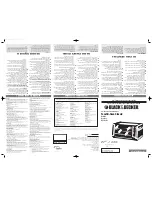
Weil-McLain 88 Water and steam boilers — Series 2 —
for Gas, Light Oil, & Gas/Light Oil-Fired Burners
34
Part No. 550-100-068/1009
Handling ceramic fiber and fiberglass materials
REMOVAL OF FRONT PLATE OR CLEANOUT PLATE MATERIALS
The burner front plate and cleanout plate gaskets contain ceramic fiber materials. Ceramic fibers can be
converted to cristobalite in very high temperature applications. The International Agency for Research
on Cancer (IARC) has concluded, "Crystalline silica inhaled in the form of quartz or cristobalite from
occupational sources is carcinogenic to humans (Group 1).":
N
Avoid breathing dust and contact with skin and eyes.
s 5SE.)/3(CERTIlEDDUSTRESPIRATOR. 4HISTYPEOFRESPIRATORISBASEDONTHE/3(!RE
-
quirements for cristobalite at the time this document was written. Other types of respirators
may be needed depending on the job site conditions. Current NIOSH recommendations can be
found on the NIOSH web site at http://www.cdc.gov/niosh/homepage.html. NIOSH approved
respirators, manufacturers, and phone numbers are also listed on this web site.
s 7EARLONGSLEEVEDLOOSElTTINGCLOTHINGGLOVESANDEYEPROTECTION
N
Apply enough water to the combustion chamber lining or base insulation to prevent airborne
dust.
N
Remove combustion chamber lining or base insulation from the boiler and place it in a plastic bag
for disposal.
N
Wash potentially contaminated clothes separately from other clothing. Rinse clothes washer thor-
oughly.
NIOSH stated First Aid.
N
Eye: Irrigate immediately.
N
Breathing: Fresh air.
REMOVAL OR INSTALLATION OF FIBERGLASS WOOL:
This product contains fiberglass jacket insulation and ceramic fiber materials in jacket insulation, burner
front plate insulation and cleanout plate gaskets. Airborne fibers from these materials have been listed
by the State of California as a possible cause of cancer through inhalation.
N
Avoid breathing dust and contact with skin and eyes.
s 5SE.)/3(CERTIlEDDUSTRESPIRATOR. 4HISTYPEOFRESPIRATORISBASEDONTHE/3(!
requirements for fiberglass wool at the time this document was written. Other types of respira-
tors may be needed depending on the job site conditions. Current NIOSH recommendations
can be found on the NIOSH web site at http://www.cdc.gov/niosh/homepage.html. NIOSH
approved respirators, manufacturers, and phone numbers are also listed on this web site.
s 7EARLONGSLEEVEDLOOSElTTINGCLOTHINGGLOVESANDEYEPROTECTION
N
Operations such as sawing, blowing, tear out, and spraying may generate airborne fiber concentra-
tion requiring additional protection.
N
Wash potentially contaminated clothes separately from other clothing. Rinse clothes washer thor-
oughly.
NIOSH stated First Aid.
N
Eye: Irrigate immediately.
N
Breathing: Fresh air.







































